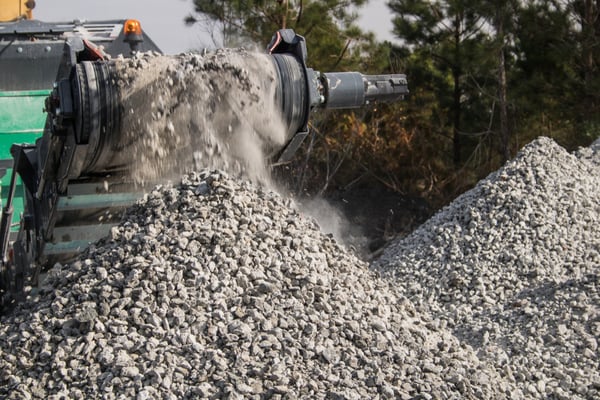Many construction projects require some type of demolition work during their initial stages. This may include the demolition of concrete foundations, sidewalks, walls and other building elements. The process results in large amounts of heavy construction materials that often go to waste.
Many materials, including concrete, can be recycled and reused in a variety of ways. The concrete recycling process varies, and the best method for each project will depend on the size and shape of the recycled concrete pieces.
Reusing concrete can help reduce construction costs by saving the cost of transporting concrete to the landfill, which is around $0.25/ton/mile. Recycling also eliminates disposal costs while reducing the environmental impact of the project. Recycled concrete will not end up in landfills and can also replace raw materials. It can be used in place of gravel, for example, which would otherwise have to be collected and transported to the construction site.
Reduce the cost and environmental impact of your project with green building measures.
How to recycle concrete?
When recycling old demolition concrete, the most common procedure is as follows:
- STEP 1: Large pieces of concrete are first crushed with special industrial equipment using jaws and large impactors.
- STEP 2: After the concrete is broken down, it is screened to remove any dirt or contaminating particles. Additional processes and equipment such as water flotation, separators, and magnets are used to remove other impurities from the concrete.
- STEP 3: The concrete is separated into coarse and small aggregates.
There is an alternative method for recycling concrete that involves spraying. However, this complicates the separation process and can result in further contamination of smaller by-products.

As described above, industrial equipment is needed to recycle concrete in the most effective way. When concrete recycling is being considered, evaluate all market options for the crushing procedure. A common solution is to rent or buy a portable crusher that can be used on multiple projects at once. Before deciding which equipment is best suited for the project, consider the following:
- The concrete must be separated from the steel. This is critical for recycling, so make sure the equipment has a separator strong enough to extract the steel from the concrete.
- Systems with separate hydraulic support can be set up more quickly.
- Control systems can be manual, automatic or remote, so consider which one is most effective for the project. This can also influence the price of the equipment.
- Some equipment has a complete system with conveyors, jaws and cones. It can complete the entire recycling process, from demolition to the final usable product.
Benefits of Concrete Recycling

There are several benefits that come with recycling concrete on construction sites:
- Firstly, recycling concrete reduces construction waste.
- Extending the useful life of landfills.
- Reducing costs generated by disposal and tipping fees.
- Reduced transport costs as concrete can be recycled close to demolition sites.
- Concrete recycling can help earn LEED certification points.
- Generating employment opportunities.
Where can recycled concrete be used?
Recycled concrete can be used in a similar way to gravel and aggregates. Following are some examples:
- Base for new asphalt pavement : There is a process called rubble, which involves breaking up an old concrete pavement and using it as a base for the asphalt.
- Outdoor Surfaces : Permeable concrete is used in sidewalks, parking lots, and walkways to reduce runoff that must be treated by storm sewer systems. Pervious concrete also helps replenish groundwater levels. In some outdoor areas, crushed concrete can be used to create porous surfaces that function similarly to permeable concrete.
- Landscaping Mulch : Recycled concrete that has been carefully crushed and graded can be used instead of gravel.
- Foundation Material for Utility Trenches : These trenches are covered with gravel to aid drainage and recycled concrete can be used as a substitute.
- Concrete aggregate : Recycled concrete can be used as a replacement for new aggregates in a concrete mix.
- Erosion barriers and reef habitats : Large pieces of broken concrete can be placed along riverbanks to control erosion or along shorelines to form the base of coral reefs. However, it is important to analyze the chemical composition of old concrete before placing it in aquatic habitats.
Recycled concrete saves on new materials and disposal costs and can be used for a variety of applications. This also reduces the environmental impact of construction projects while helping to earn credits toward a LEED certification.

